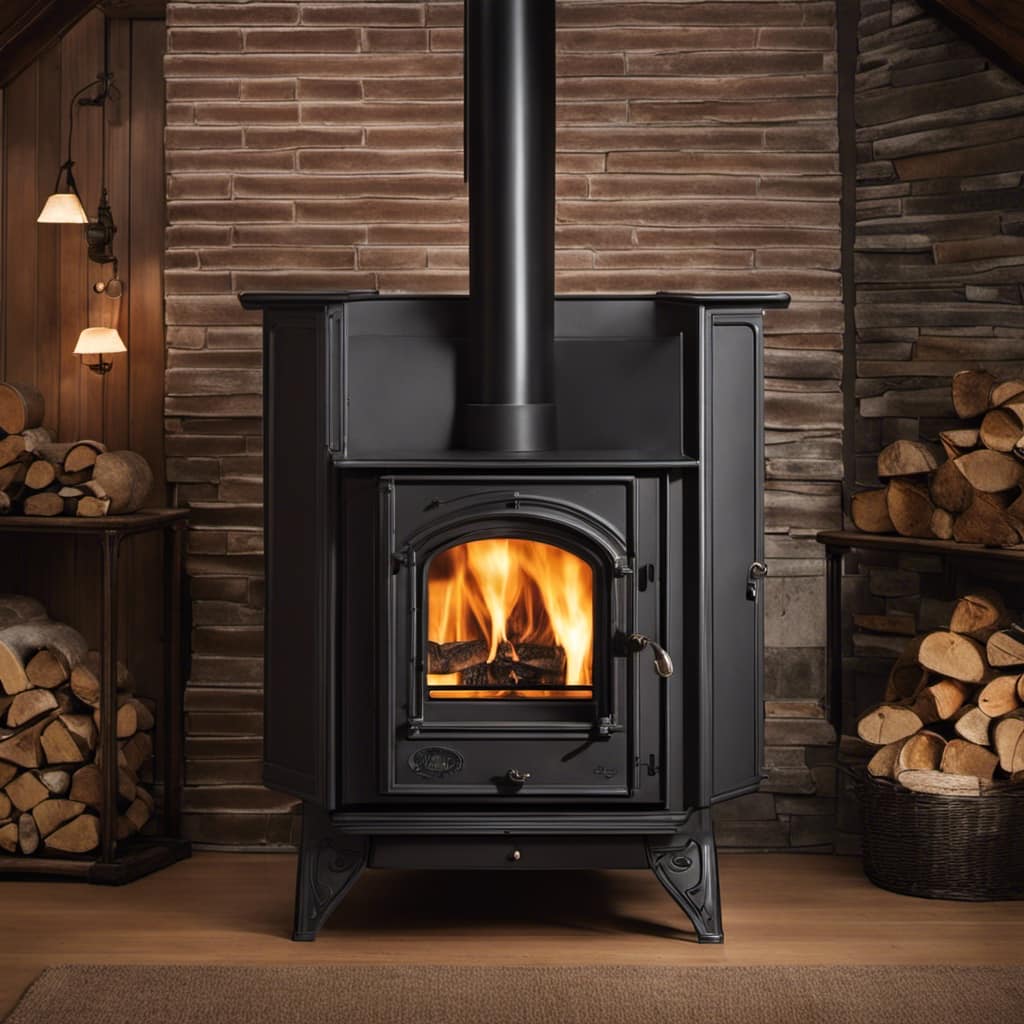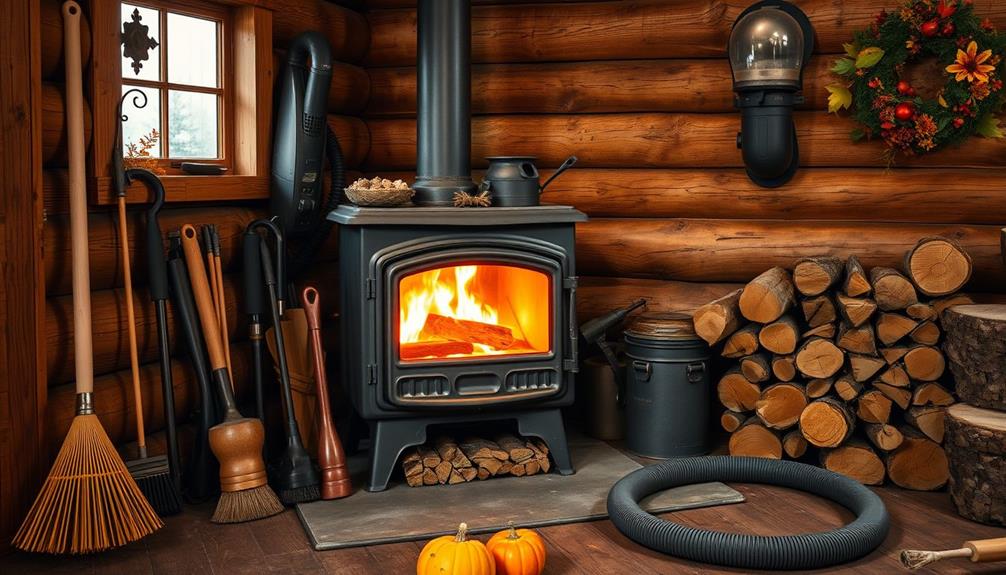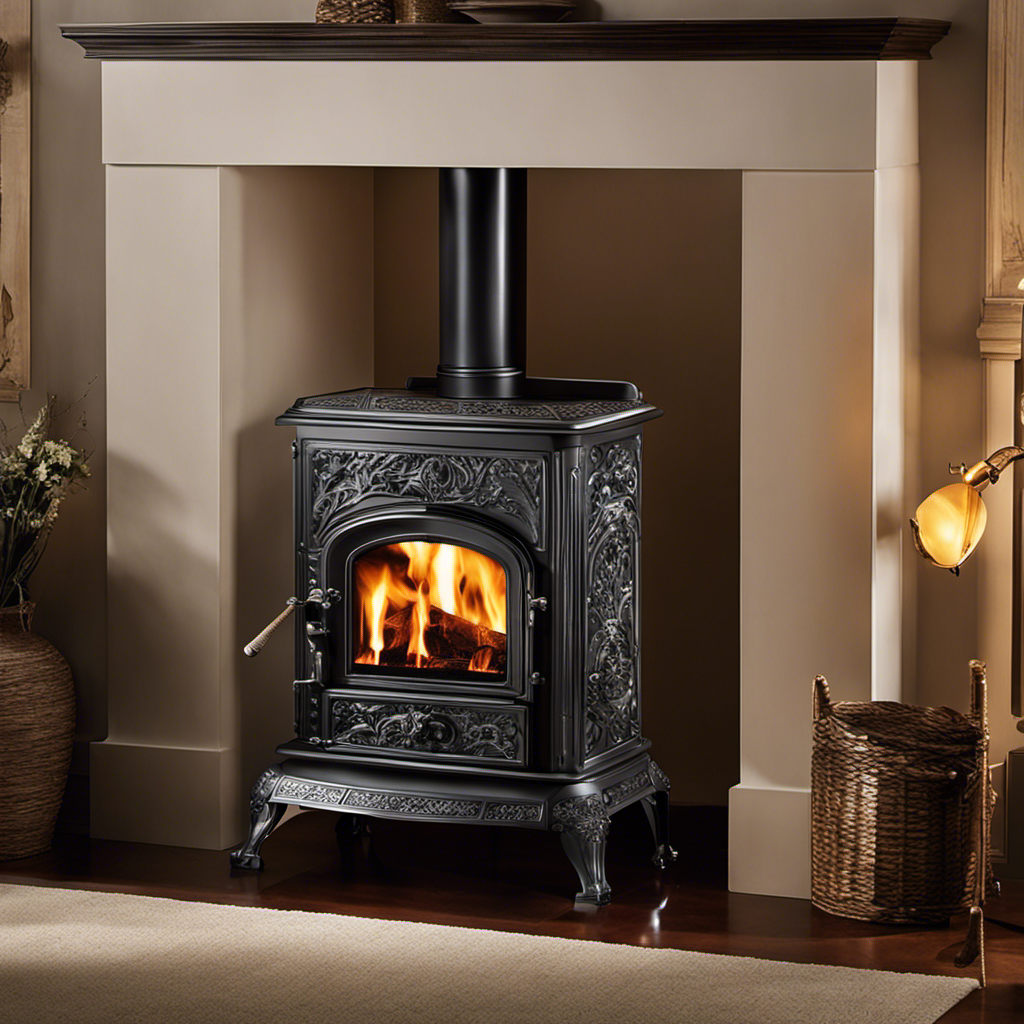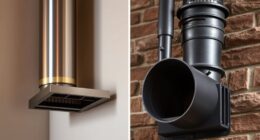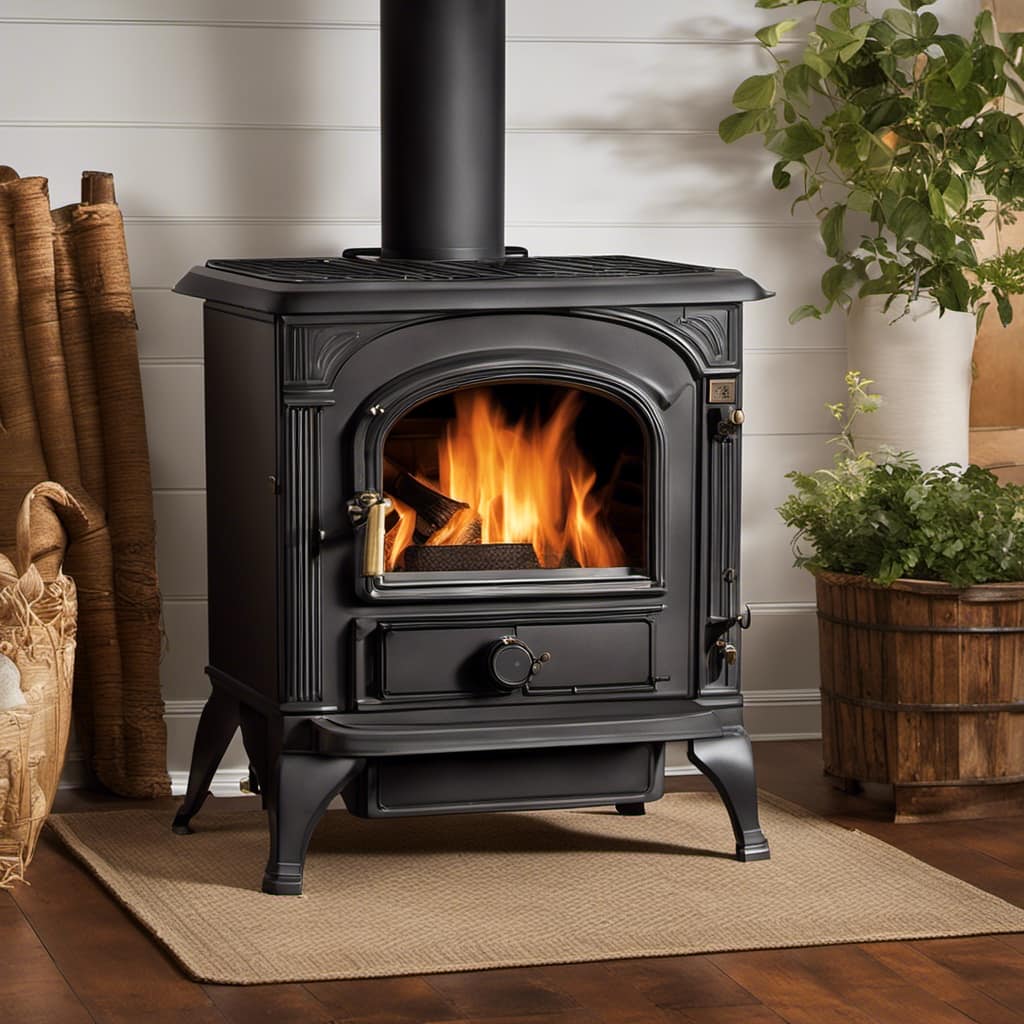
As an outdoor lover, I have always been intrigued by the inner workings of an outdoor wood stove. Picture a small yet powerful device that utilizes the natural energy of burning wood to offer heat and coziness in the vast wilderness.
In this article, we’ll delve into the intricate design, the combustion process, and the heat transfer mechanisms that make these stoves so efficient. Join me on this journey as we unravel the secrets behind how an outdoor wood stove works.
Key Takeaways
- The design and components of an outdoor wood stove include a firebox, chimney, air intake system, and insulation, which maximize heat output and minimize environmental impact.
- Using dry and seasoned hardwoods like oak, maple, and birch as fuel, and properly seasoning the wood for at least 6 to 12 months, can optimize the stove’s performance.
- The combustion process in an outdoor wood stove involves the ignition of the wood, release of volatile gases, regulation of air flow through intake vents and exhaust outlets, and control of burn rate and temperature through dampers.
- Heat transfer in an outdoor wood stove primarily occurs through convection, where the air is heated by direct contact with the firebox and circulated throughout the surrounding area to prevent hotspots and cold spots.
The Design of an Outdoor Wood Stove
I really admire the simplicity and efficiency of the design of my outdoor wood stove. Its design allows for optimal heat transfer and combustion, resulting in high efficiency.
The stove is constructed with a firebox, a chimney, and an air intake system. The firebox is insulated and made of durable materials to withstand high temperatures. The chimney ensures proper ventilation, allowing for the release of smoke and combustion byproducts.
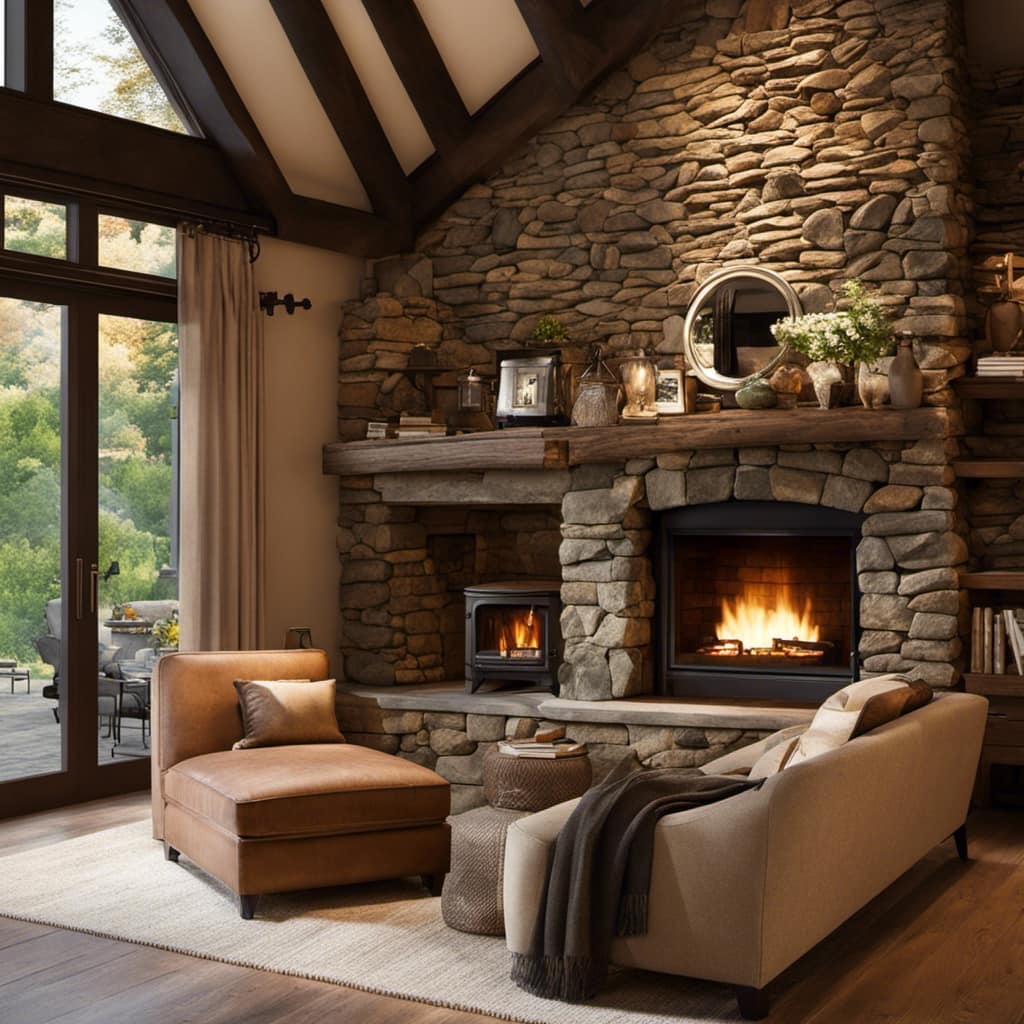
The air intake system regulates the amount of oxygen entering the firebox, promoting complete combustion and reducing emissions. This design not only maximizes the heat output from the wood but also minimizes the environmental impact.
Fueling an Outdoor Wood Stove
While using an outdoor wood stove, it’s important to only use dry and seasoned wood to ensure optimal performance and efficiency. The type of wood you choose to burn in your outdoor wood stove can greatly impact its efficiency. Hardwoods such as oak, maple, and birch are ideal choices as they burn longer and produce more heat compared to softwoods like pine or spruce.
It’s essential to properly season the wood before using it in the stove. This involves allowing the wood to dry for at least 6 to 12 months, depending on the type of wood. Dry wood burns more efficiently and produces less smoke and creosote buildup.
Additionally, it’s recommended to split the wood into smaller pieces to increase its surface area and allow for better airflow, resulting in more efficient combustion. By following these wood selection and efficiency tips, you can maximize the performance of your outdoor wood stove.
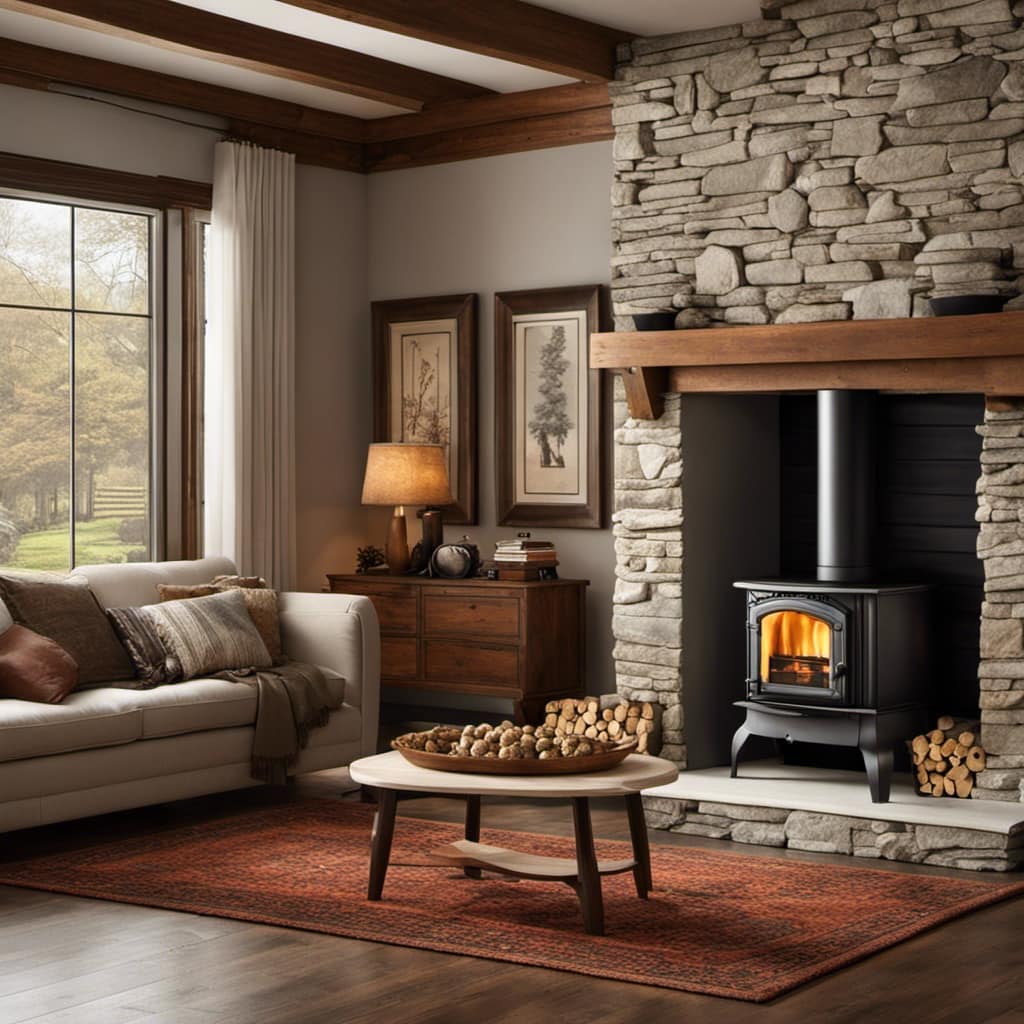
Combustion Process in an Outdoor Wood Stove
Although the combustion process in an outdoor wood stove is complex, it’s essential for efficient and clean burning. The ignition process starts when the wood is exposed to heat, causing the release of volatile gases. These gases mix with oxygen in the air, leading to combustion.
To ensure proper air flow during combustion, outdoor wood stoves are designed with air intake vents and exhaust outlets. The air flow is regulated using dampers, allowing for the control of burn rate and temperature. This precise control of air flow ensures optimal combustion and minimizes the production of pollutants.
Additionally, the combustion process in an outdoor wood stove is influenced by factors such as wood moisture content, size of the wood pieces, and the overall design of the stove.
Heat Transfer in an Outdoor Wood Stove
Using a convection process, heat is transferred from the firebox to the surrounding area in an outdoor wood stove. The primary method of heat transfer is through convection, where air is heated by direct contact with the firebox and then circulated throughout the stove and surrounding space. This convection process ensures a more even distribution of heat, preventing localized hotspots and cold spots.
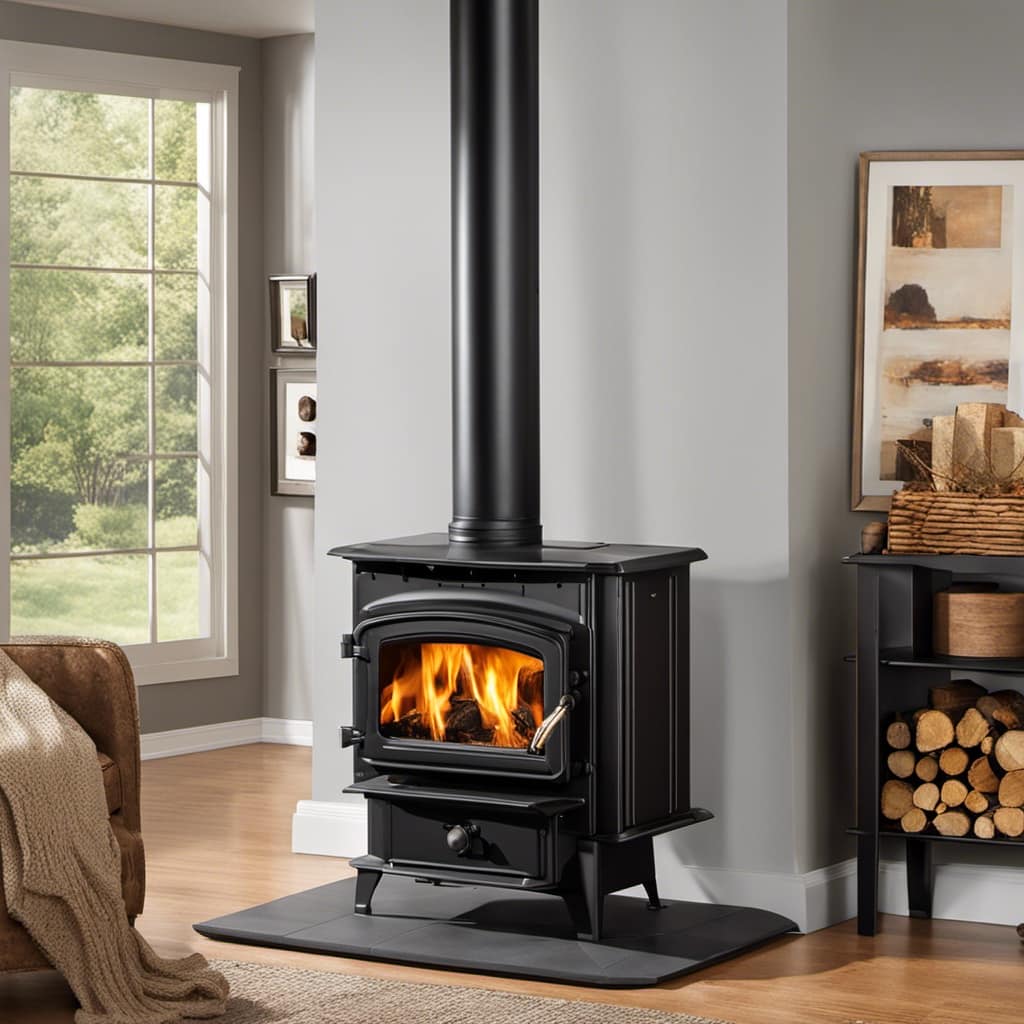
To measure the efficiency of heat distribution, factors such as the stove’s design, insulation, and air circulation must be considered. Efficient heat distribution ensures that maximum heat is transferred from the firebox to the surrounding area, minimizing energy waste and providing optimal warmth.
Proper heat distribution is essential for the overall performance and effectiveness of an outdoor wood stove.
Maintenance and Safety of an Outdoor Wood Stove
I ensure the maintenance and safety of my outdoor wood stove by regularly inspecting the chimney and removing any creosote buildup.
To keep my stove in optimal condition, I follow a set of cleaning procedures that involve the following steps:
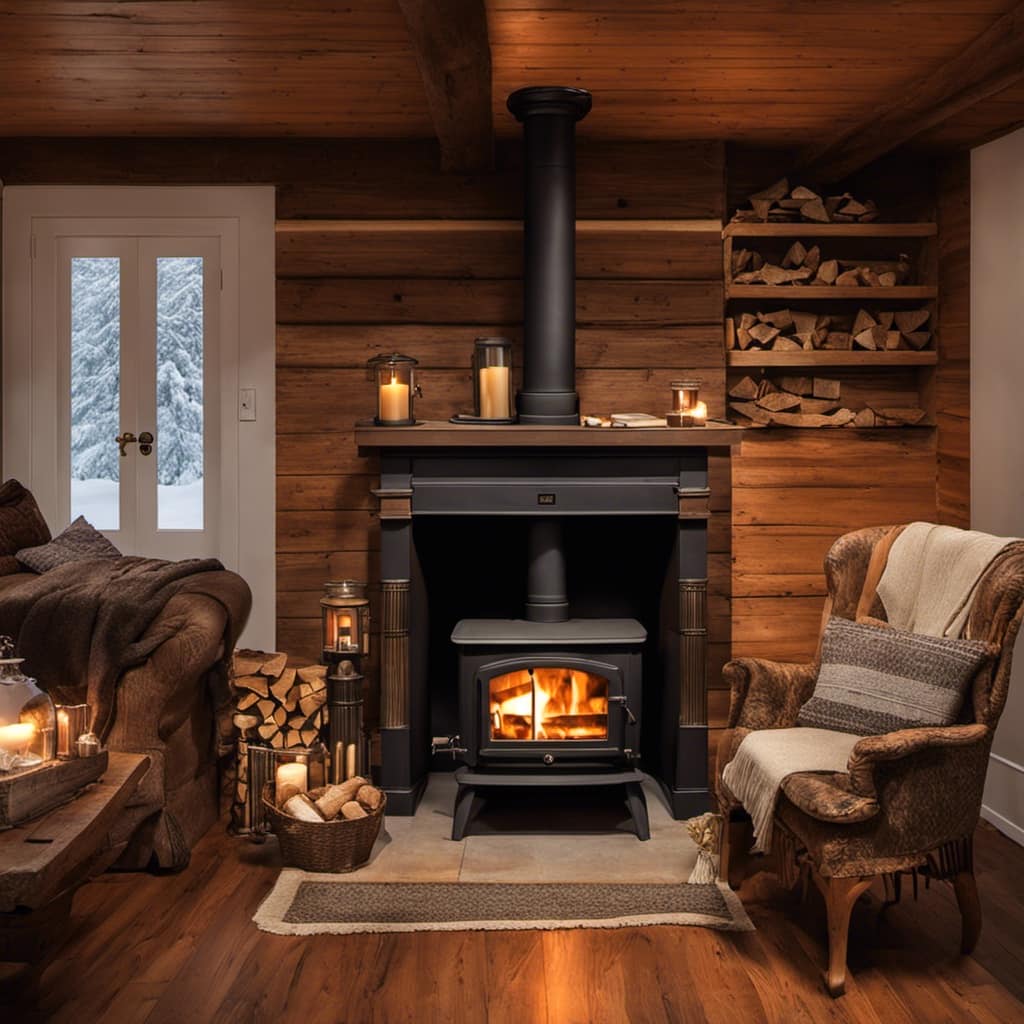
-
Chimney Inspection: I visually inspect the chimney for any signs of damage or blockage. This includes checking for cracks, loose bricks, or debris that may hinder proper ventilation.
-
Creosote Removal: Creosote buildup is a common issue in wood stoves and can lead to chimney fires. I use a chimney brush to remove any creosote deposits, ensuring a clean and efficient chimney.
-
Ventilation Check: Proper ventilation is crucial for the safe operation of my wood stove. I inspect the air vents to ensure they’re clear from debris and functioning properly, allowing for adequate airflow.
Frequently Asked Questions
Can an Outdoor Wood Stove Be Used to Cook Food?
Yes, an outdoor wood stove can be used to cook food. Cooking with an outdoor wood stove offers the benefits of natural heat and flavor. However, it is important to prioritize outdoor wood stove safety to prevent accidents and ensure a pleasant cooking experience.
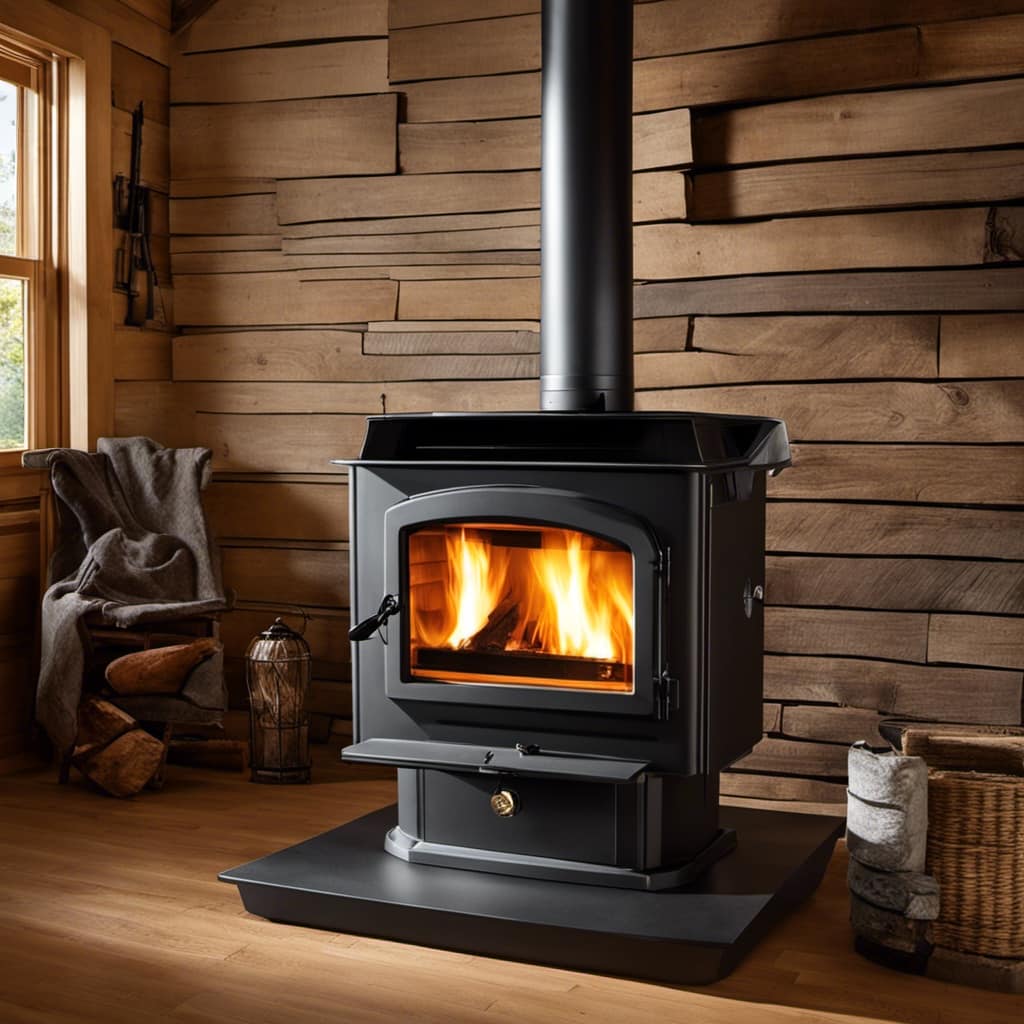
How Long Does It Take for an Outdoor Wood Stove to Heat Up?
It depends on various factors such as the size of the stove, type of wood used, and weather conditions. Outdoor wood stove efficiency can also affect heating time.
What Is the Average Lifespan of an Outdoor Wood Stove?
The average lifespan of an outdoor wood stove varies depending on factors such as usage and maintenance. Regular cleaning, proper fuel storage, and annual inspections can help prolong its lifespan.
Are Outdoor Wood Stoves Environmentally Friendly?
Outdoor wood stoves can have a negative impact on air quality due to carbon emissions and smoke. It’s important to consider the environmental effects of using these stoves and explore alternative heating options.
Can an Outdoor Wood Stove Be Used in All Weather Conditions?
In all weather conditions, an outdoor wood stove can be used with proper maintenance. It offers numerous benefits, such as efficient heating and cost savings, making it a practical choice for different climates.
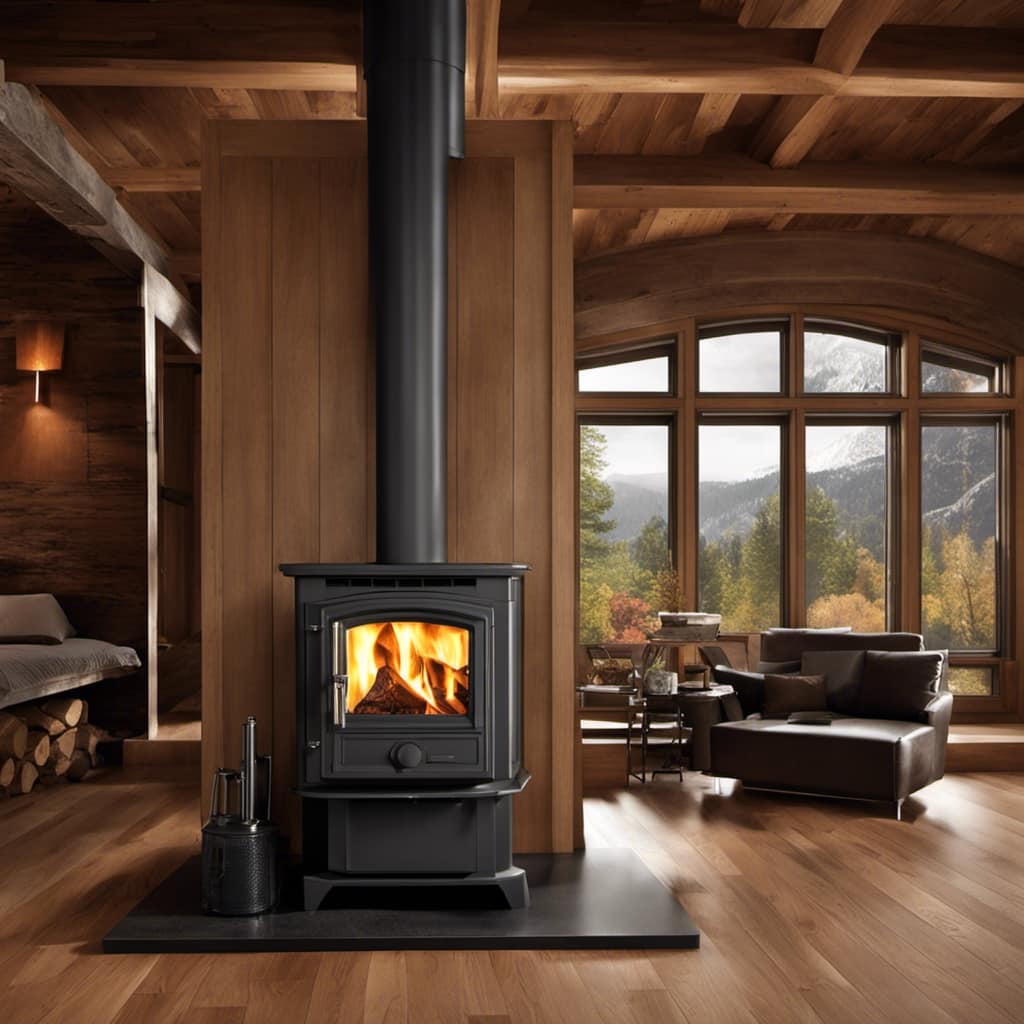
Conclusion
In conclusion, the outdoor wood stove is a marvel of engineering, harnessing the power of fire to provide efficient and reliable heat.
The intricate design ensures optimal combustion, maximizing heat output while minimizing harmful emissions.
The fueling process is simple, allowing for easy maintenance and operation.
With its exceptional heat transfer capabilities, the outdoor wood stove is a must-have for those seeking a cozy and warm outdoor experience.
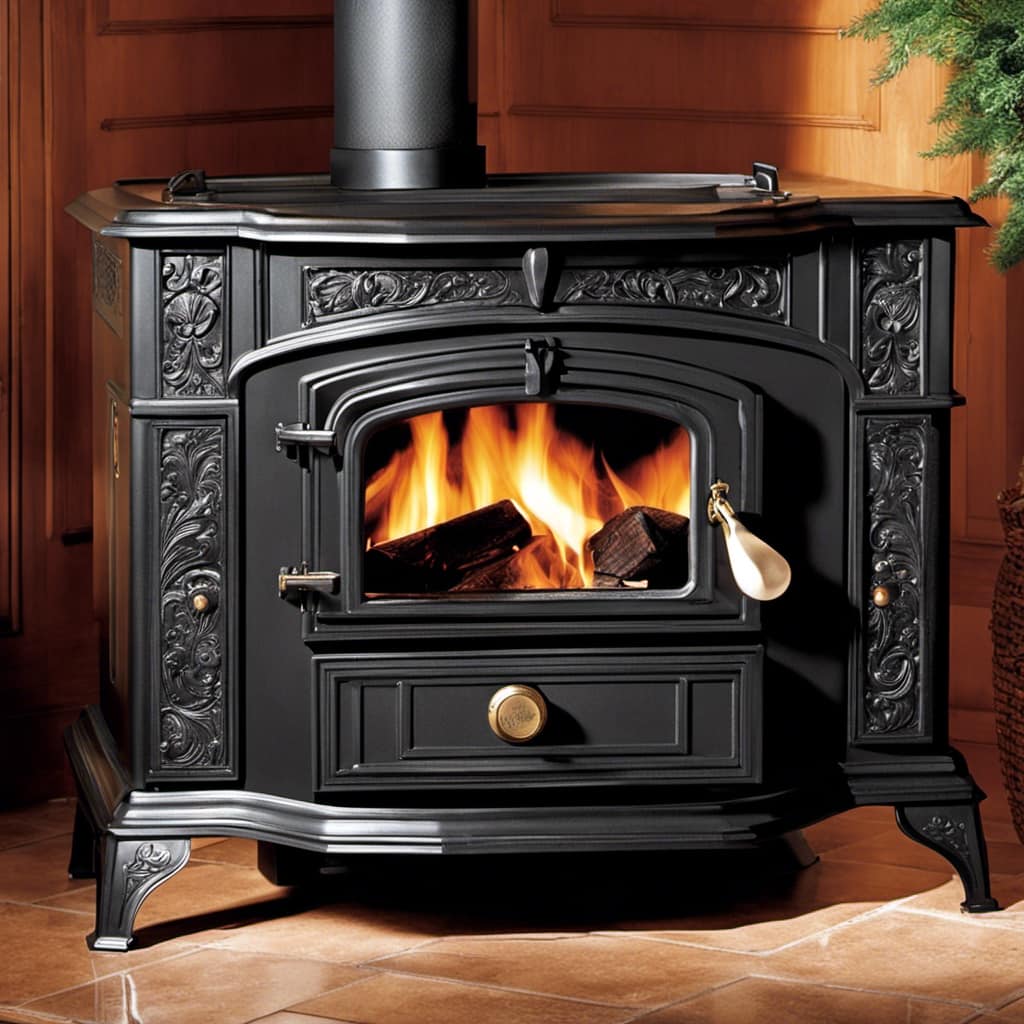
Safety is paramount, and proper maintenance ensures years of reliable performance.
Growing up surrounded by the vast beauty of nature, Sierra was always drawn to the call of the wild. While others sought the comfort of the familiar, she ventured out, embracing the unpredictable and finding stories in the heartbeat of nature.
At the epicenter of every remarkable venture lies a dynamic team—a fusion of diverse talents, visions, and passions. The essence of Best Small Wood Stoves is crafted and refined by such a trio: Sierra, Logan, and Terra. Their collective expertise has transformed the platform into a leading authority on small wood stoves, radiating warmth and knowledge in equal measure.


